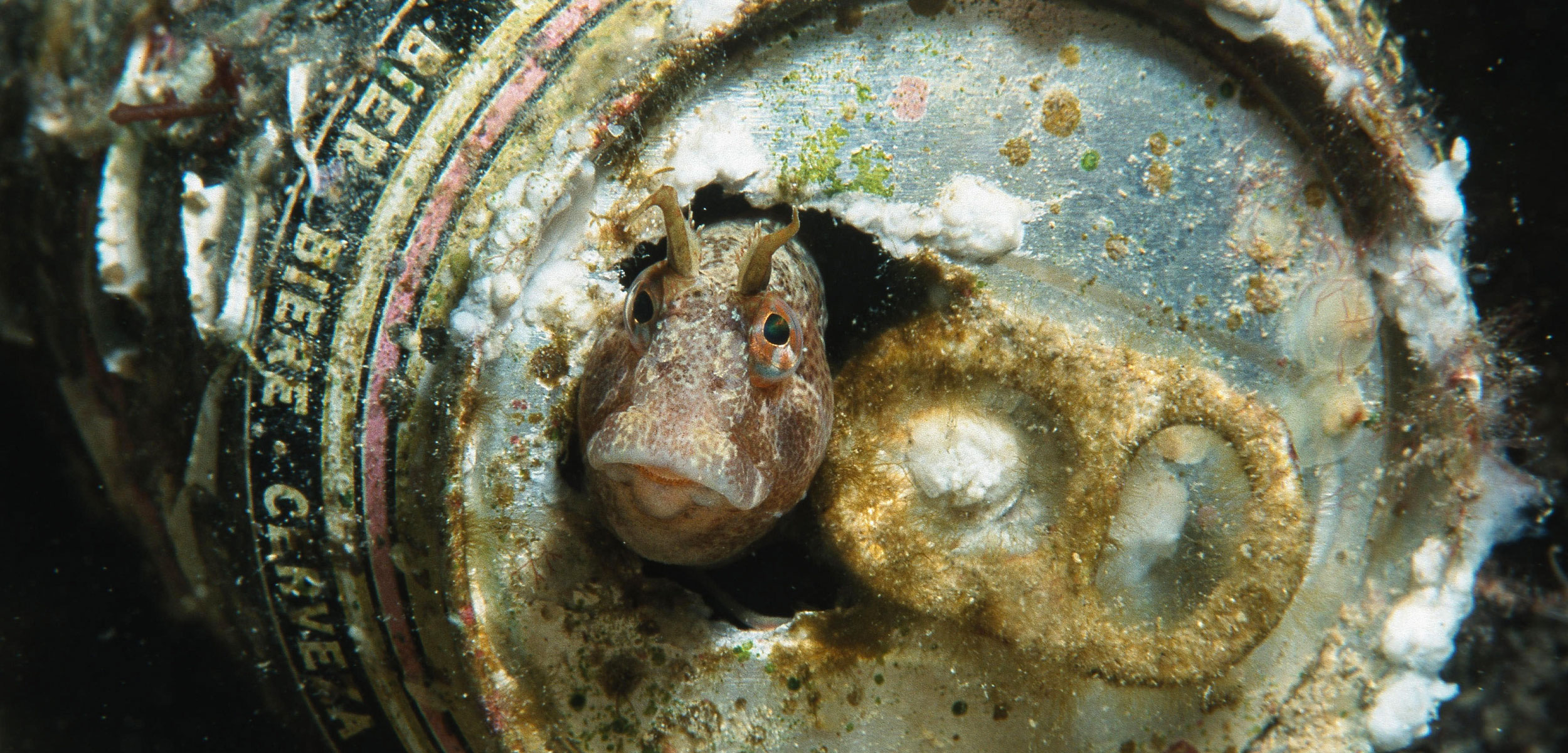When Litter Becomes Habitat
In a busy and polluted Italian port, living things thrive on anthropogenic debris.
Article body copy
A team of zoologists surveying a section of the Gulf of Pozzuoli off the coast of Naples, Italy, expected to find little life and biodiversity after years of industrial activity. Instead, they were amazed by the amount of life they witnessed among the litter.
The Gulf of Pozzuoli is a small bay in the northern part of the Gulf of Naples. The area has been home to industrial activity and high naval traffic since the 20th century, leading to pollution. As a result, the area was given priority status for remediation by the government. Since 2016, a consortium of researchers has been working on a project to ameliorate the marine habitat. As part of the project, Fabio Crocetta, a zoologist with the Anton Dohrn Zoological Station in Naples, assessed the amount of litter and the bay’s biodiversity in 2019.
“What we found was totally unexpected,” says Crocetta. Despite the area being full of litter, it was also full of life with relatively high biodiversity. Crocetta and his colleagues found that the anthropogenic debris—plastic, metal, concrete, wood, and nylon—was almost all completely colonized by fouling organisms. These include algae and animals such as barnacles and mussels that settle and grow on hard surfaces. They also saw mollusks, fish, and octopuses using trash such as bottles for shelter or as places to lay their eggs, which they would normally do in caves or shells.
The findings posed a quandary for the researchers. “Of course, the litter should not be thrown into the sea and it should be collected because it causes problems, but at the same time the litter was creating a substrate,” says Crocetta, noting that the debris provided habitats not typically found on this usually muddy patch of seafloor. This raises a broader question concerning marine litter and plastic pollution around the world: what can be done when litter becomes the ecosystem?
Biological oceanographer Malene Mohl pondered this question while sailing roughly 20,000 kilometers and documenting plastic pollution in the Pacific Ocean. Mohl works for the World Wildlife Fund in Denmark and says “there is no doubt in my mind that plastic debris is changing the marine ecosystem.” She witnessed debris create floating raft habitats in the open ocean that palm leaves, timber, or coconut shells might otherwise provide. She also saw discarded fishing nets that settle and become incorporated into reefs. Removing a debris raft eliminates the algae and animals growing on it, and takes food and shelter away from the fish. Removing fishing nets could destroy reef habitat. Therefore, pragmatic choices must be made, weighing the costs and benefits of leaving debris in place.
Unfortunately, Mohl explains, we still lack all the information regarding the costs associated with plastic pollution. “Plastic is changing the marine environment in so many different ways,” she says. Ingestion, entanglements, and chemical leaching are the obvious effects, but debris can also change how light comes through the water, affecting temperature and other factors that maintain the balance of the marine ecosystem.
In Italy, the next step for Crocetta is to conduct similar surveys throughout the Gulf of Naples in order to see the extent of litter pollution and the effects on biodiversity. Until now, there has been very little assessment of the area. There is no historical data from the area, and with no baseline data on a pristine Gulf of Naples, the team has nothing to compare their results to.
Agnese Marchini, an ecologist at the University of Pavia in Italy, compared Crocetta’s findings to what she normally sees in high-traffic ports. The biofouling organisms she most often observes in ports are opportunistic species that can withstand these highly disturbed environments. In her opinion, the species found in the Gulf of Pozzuoli looked more akin to what you would expect in a natural environment. According to Marchini, they are likely only a subset of naturally occurring species—the ones that aren’t picky and can quickly colonize new areas.
Crocetta and his colleagues have discussed solutions, such as removing the litter and replacing it with natural substrates like rocks to provide habitat for the organisms living on the debris.
For now, Mohl says the one proven action we can take is stopping more plastic from entering the ocean. “It’s hard to say what environmental effect a cleanup would have,” she says, “but we surely need to prevent the problem from growing.”

